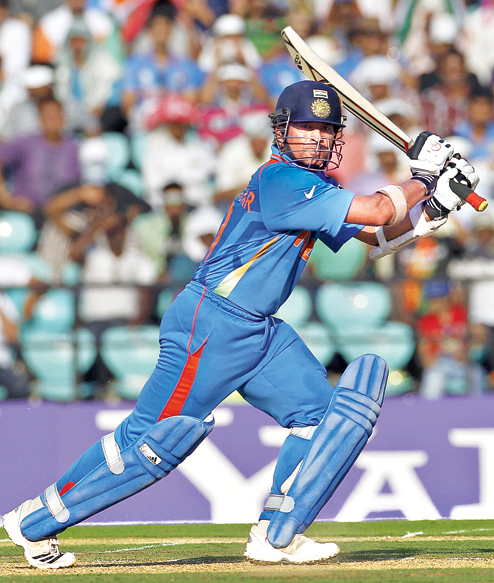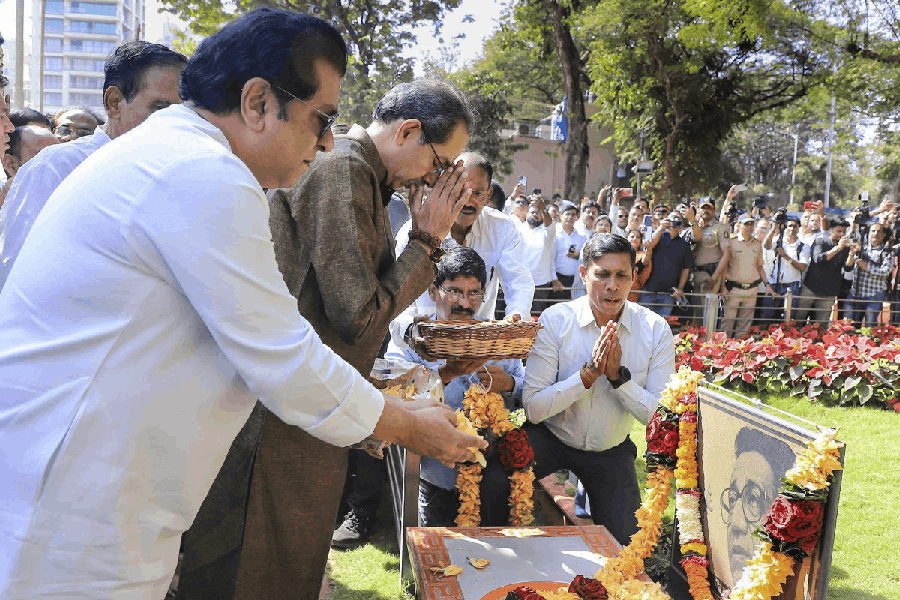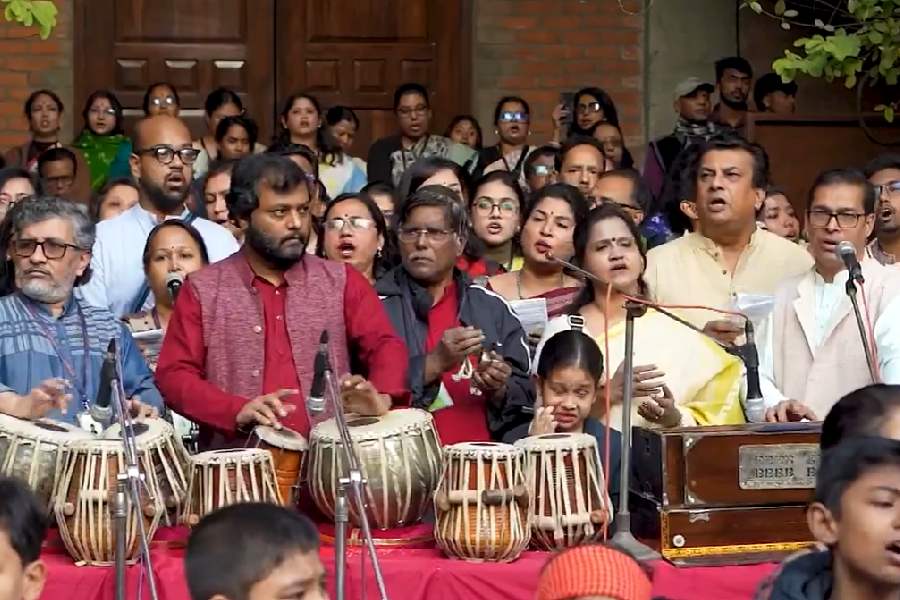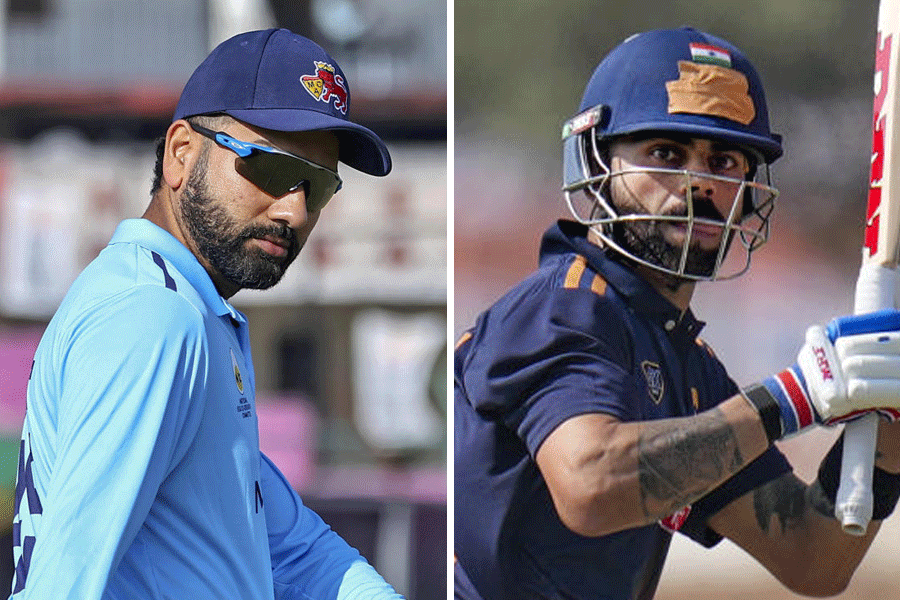
Lata Mangeshkar's voice carries. And never was it more evident than in the summer of 1983. The Indian cricket team had won its first World Cup match. In the midst of the euphoria, the former Board of Cricket Control of India (BCCI) president N.K.P. Salve announced that each of the players would be awarded Rs 5,000. On behalf of the team, Sunil Gavaskar refused to accept what the cricketers thought was a tip.
When they returned to India from England after the Cup, cricket aficionado Raj Singh Dungarpur, who was close to Mangeshkar, urged her to sing for the "boys". She did - and from the proceeds of the concert in Delhi a sum of Rs 1 lakh was given to every player.
"It was a huge sum those days," recalls cricketer-turned-politician Kirti Azad, who was a part of the winning team.

With a new round of the games to begin from Saturday, this is the season of World Cup nostalgia. After all, the 11th tournament, to be held in Australia and New Zealand, marks 40 years of the Cup.
In these four decades, the game has changed radically. Money, for one, is not an issue any more. The winning team will receive US $3.975 million (Rs 24.6 crore). In 1975, the year it started, the total prize money was £8,000 ($12,200).
"The money is the biggest change in the World Cup," Anand Vasu, managing editor of the cricket journal Wisden India, points out.
In 1975, the prize was funded by the Prudential Assurance Company of the UK. In 2015, nine companies have together brought in around $2 billion for the games. In addition to this, ESPN-Star Sports, the official broadcaster, has put in $500 million for television rights. Another $250 million have been generated from advertisements on hoardings.
The games may be a mega event today, but back then, few thought the tournament with eight teams would go beyond its first edition. "Nobody took the event seriously," cricket historian Boria Majumdar says. "Even Sunil Gavaskar didn't - he scored only 36 runs against 174 balls."
Those days, the game was controlled by three superior teams - England, Australia and West Indies, which won the Cup in 1975 and 1979. "India was inconsequential then," Majumdar adds.
Then came 1983. "When India won the semifinals against England, the Indian team was taken seriously. Back home, too, the romance with cricket took off," he recalls.
But Indian viewers could not get a glimpse of the games till the semifinals because it was only then that Doordarshan started telecasting the matches, and that too after the BCCI paid it. Old-timers recall that the telecast of the finals was interrupted several times because of a loss of a satellite link.
Cricket lore has it that when Vivian Richards was batting in the last over of the final, the match was interrupted for the evening news. It was only through the radio that Indians learnt that Richards was caught by Kapil Dev and India had won the Cup.
India's victory also ensured that the games moved from England to the Indian subcontinent in 1987, when India and Pakistan were the co-hosts. The story goes that the Marylebone Cricket Club turned down Salve's request for six extra tickets in 1983. So a miffed Salve collaborated with Pakistan to bring the tournament to Asia.
"The idea was to get World Cup out of the control of England," cricket statistician Mohandas Menon says.
The 1983 victory opened the doors to sponsorships as well. Star players got offers to endorse brands. In 1987, the Prudential World Cup became the Reliance World Cup. But in 1999, the International Cricket Council (ICC) stopped corporate sponsorship for the title. Today, it's just known as the ICC World Cup - which India won in the last edition of the games.
The game with limited overs was a change from Test matches, and started to the attract crowds. "The World Cup has played its part in reinvigorating cricket and equipping it to thrive in the twenty-first century," says UK-based cricket writer Andrew Hughes.
The games added colour in 1992 for what was then called the Benson & Hedges Cup, as teams took to coloured clothes. The game introduced day-and-night matches. The red ball was replaced by two white balls, which were used for 25 overs each.
That was when Kerry Packer, the then owner of Australia's Nine Network, packaged the game for the television screen, telecasting it live in Australia. "The perspective to the World Cup changed," former cricketer Maninder Singh says.
With the advent of satellite television in India, the BCCI, which used to earlier pay Doordarshan for airing the matches, sold television rights to Star India. With cricket reaching every TV-viewing home, corporate sponsors sprung into action with the Wills World Cup, played in the subcontinent in 1996.
Money started flowing in. Menon points out that more money is spent on the World Cup cricket than on the Football (Fifa) cup.
In these 40 years, the number of teams has also increased. In 1996, the Netherlands, Kenya and the United Arab Emirates joined the group. In 1999, Scotland and Bangladesh came in. In 2007, Ireland and Bermuda picked up the bat. In this year's edition, 14 teams will take part.

Some, however, believe that the game is not as exciting as it used to be. "Previously, bowlers bowled at the speed of 150 kilometre an hour but now the maximum speed would be around 135km," Singh points out.
He adds that the playing ground has shrunk, making it easier for batsmen to score. "The organisers realised that people come to watch sixes and fours. So they have made these changes," Singh says. Former commentator Narottam Puri adds that wide bats also resulted in more runs. "A casual flick would go for a four and a full toss for a six," he says.
Cricket writer Mihir Bose believes that in terms of the game, the biggest change over the last 40 years is the number of overs being pared down from 60 to 50. "The 60-over game was much like a Test match; you started slowly and then picked up speed when scoring. The 50-over game is more or less players going full throttle right from the word 'go'," he explains.
Former cricketer Arun Lal also believes that the rules today favour the batsman over the bowler. "I think that's unfair. There should be a balance between the two," he says.
Experts say that 2015 will be a crucial year for the World Cup. The growth of the shorter 20-20 matches has changed the way a viewer watches a match. "This is a testing year for the tournament to see if the 50-over format is going to survive," Majumdar says.
So, cricket lovers, just sit tight and let the ball roll.
Additional reporting by Avijit Chatterjee and Abimanyu Nagarajan in Calcutta











